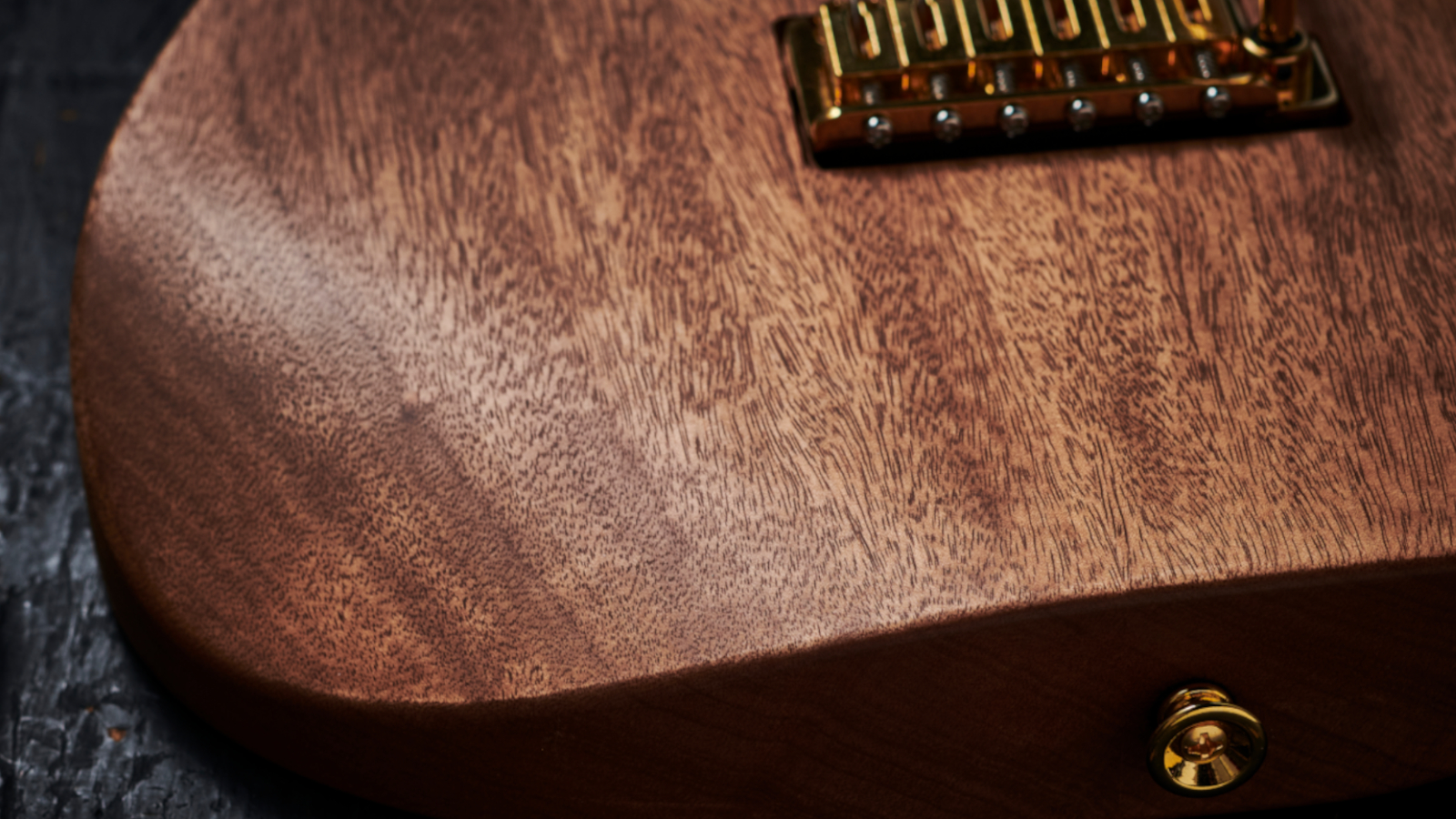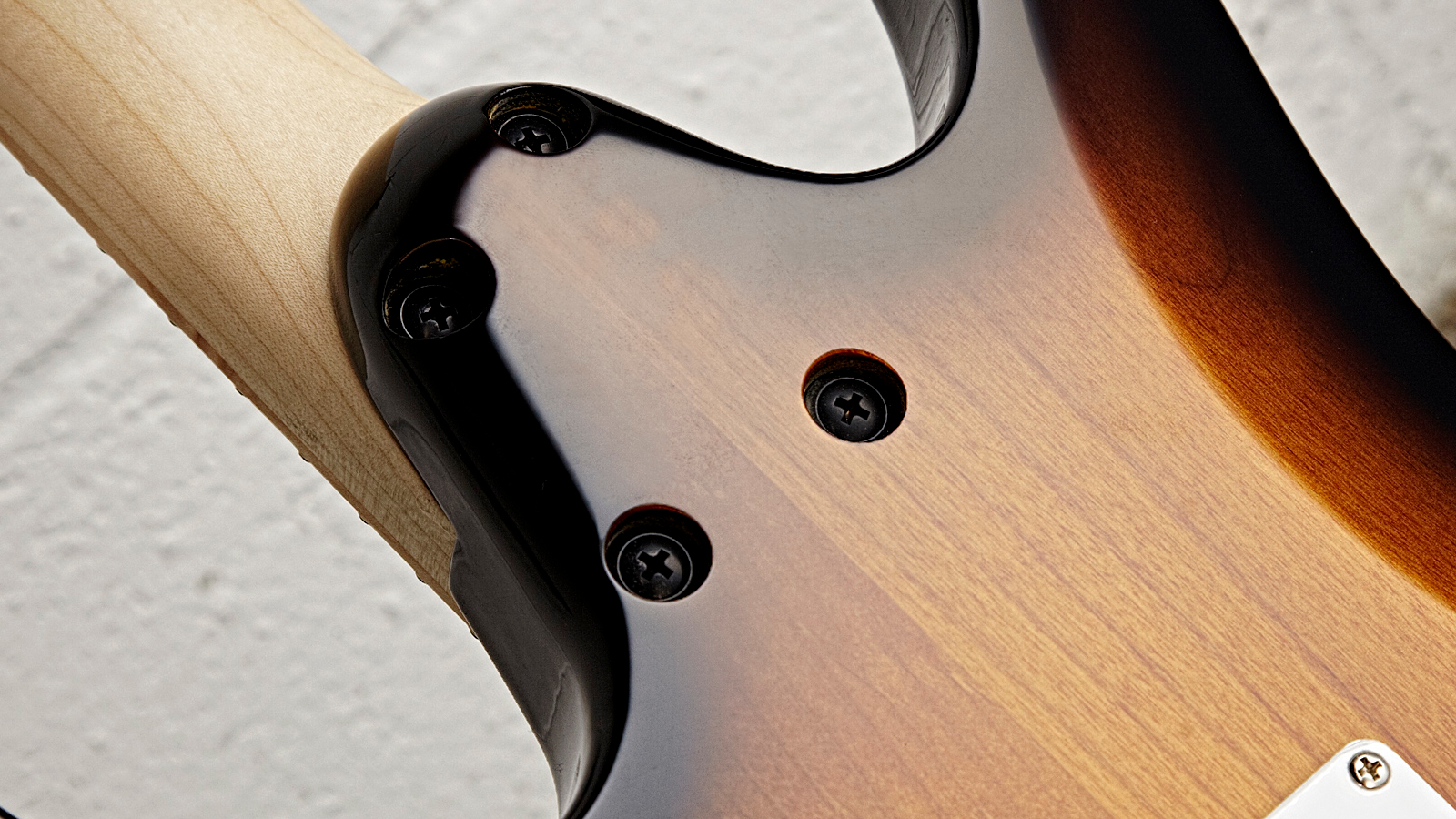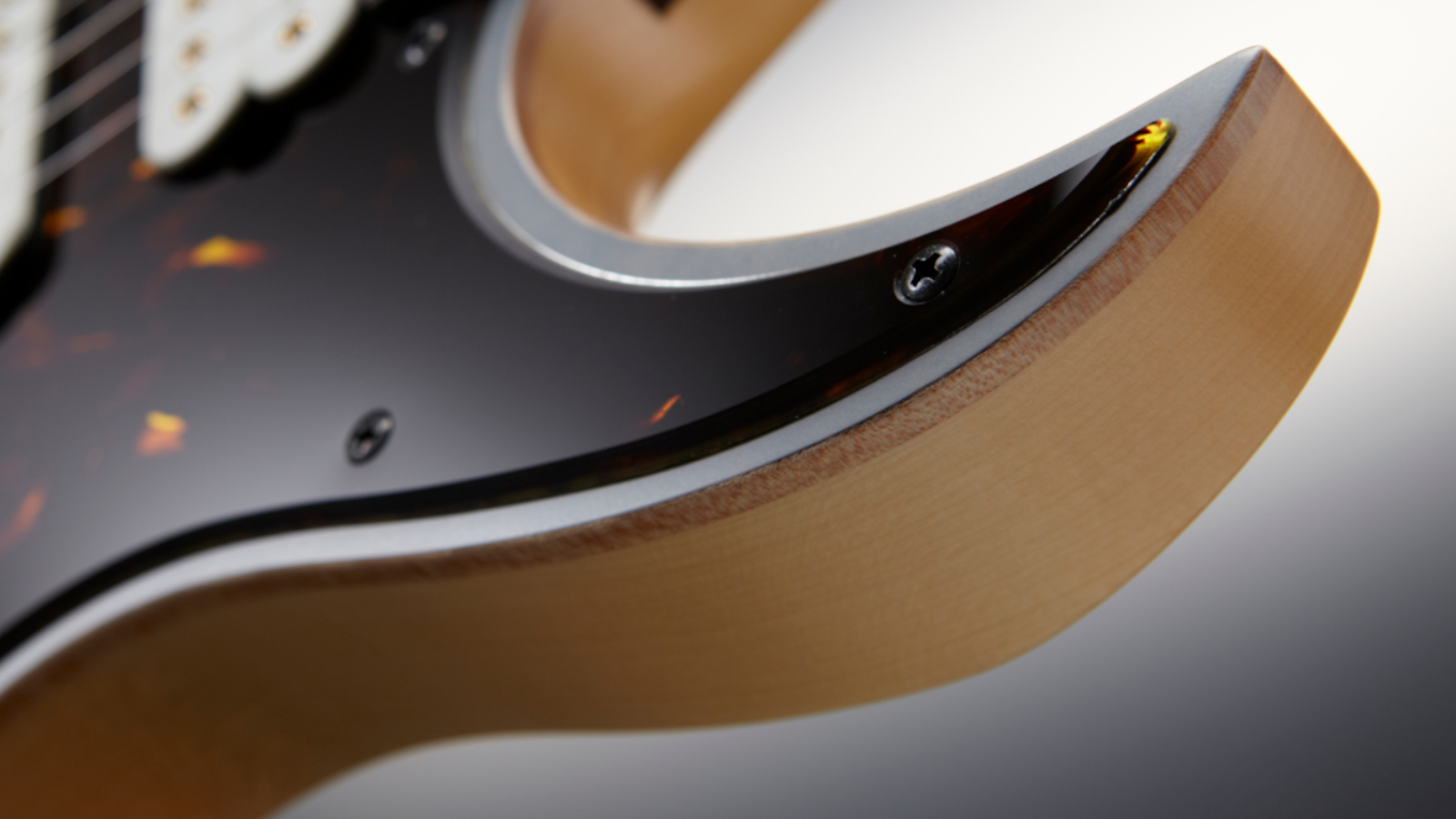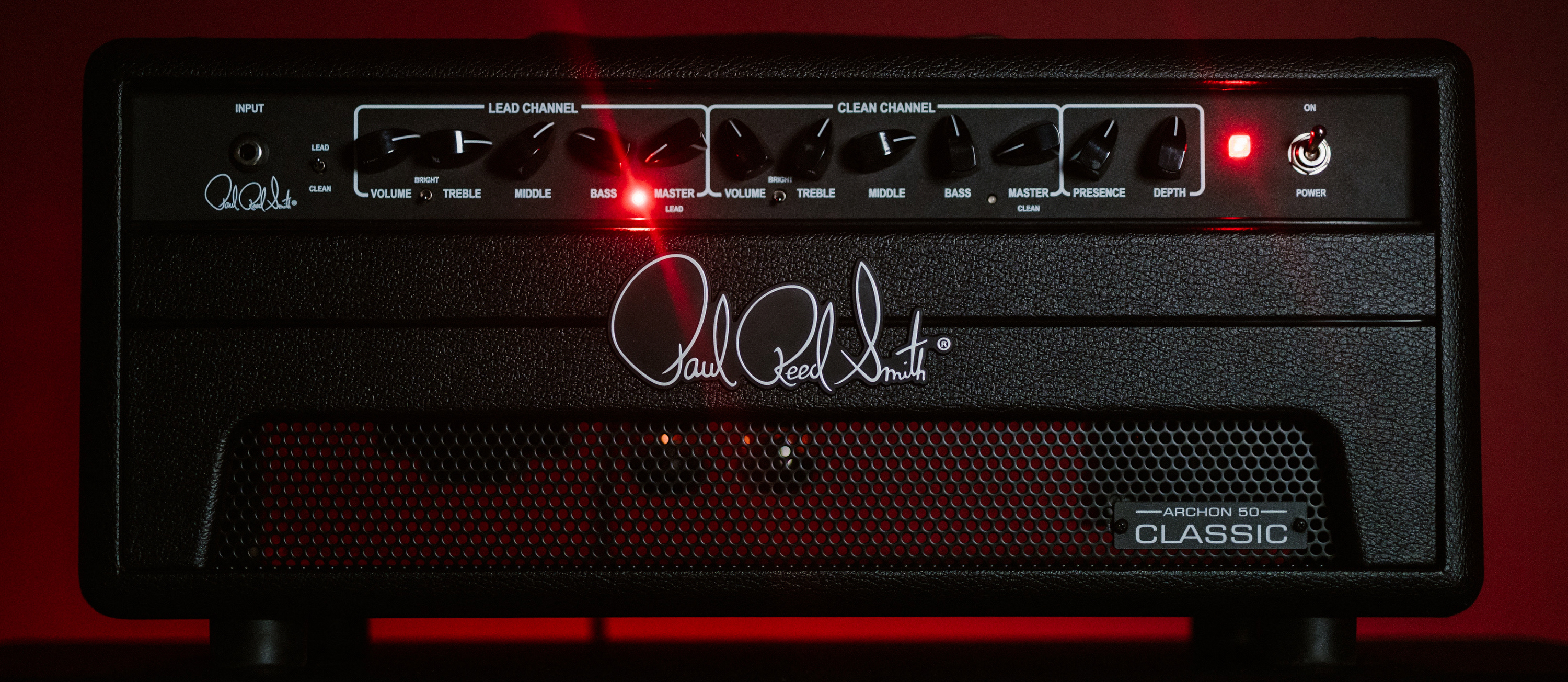A Rough Guide to Solidbody Electric Guitar Tonewood
Electric guitar bodies come in a huge variety of shapes, sizes and tonewoods; here are the basics every player needs to know.

While there are many variables at play when it comes to overall tone, the body of a solid electric guitar acts as a soundboard. Body material is critical to the clarity and definition of the guitar's acoustic voice. Different woods determine how the body "hears" string vibration.
Electric guitar bodies are available in a wide variety of woods, each with its own sonic qualities. Variations in density and weight can endow bodies cut from the same board with markedly different tone colors.
Still, we can make some general assumptions.
Maple (see above) provides a sharp pick attack and quick decay, and generates a strong fundamental response without major overtone coloration. Varieties include curly, flamed, bird's-eye, and soft.

Mahogany is preferred by players looking for a warm, round tone. Smooth attack and rich, singing sustain characterize the sound of this light to moderately heavy wood. When mahogany is extremely heavy, it loses the warm, round attributes that make it a desirable tone wood.
Gibson's Les Paul Standard, with its maple-capped mahogany body, is a classic example of how tone woods can be combined to gain the best of both worlds – tolerable weight and good high-end reproduction.

Swamp ash, a lightweight American wood, has a distinct ringing tone. Swamp ash bodies work well with spring tremolo systems and single-coil pickups, producing transparent timbres with bell-like overtones.
All the latest guitar news, interviews, lessons, reviews, deals and more, direct to your inbox!
Medium-weight swamp ash bodies tend to have the best tonal balance and sustain. Extremely light swamp ash bodies can have a weak bottom end and thin sound.

Alder is a common body wood. Its sound – characterized by a moderate attack and smooth decay – gives the guitar an even, balanced tone with well-defined lows and clear highs.
Alder's tonal balance makes it a good choice for guitarists who need an instrument that can cover a broad range of musical styles.

Guitars built for loud, high-gain playing frequently feature basswood bodies. Basswood's tone is smooth, without many sharp edges. Attack is moderate, while sustain is round and even.
Alternative woods are becoming increasingly popular. You can easily find custom and production instruments that feature koa, poplar, and walnut bodies.
Exotic woods (such as bubinga, padauk, and zebrawood) and synthetic materials are also available.
Guitar Player is the world’s most comprehensive, trusted and insightful guitar publication for passionate guitarists and active musicians of all ages. Guitar Player magazine is published 13 times a year in print and digital formats. The magazine was established in 1967 and is the world's oldest guitar magazine. When "Guitar Player Staff" is credited as the author, it's usually because more than one author on the team has created the story.
